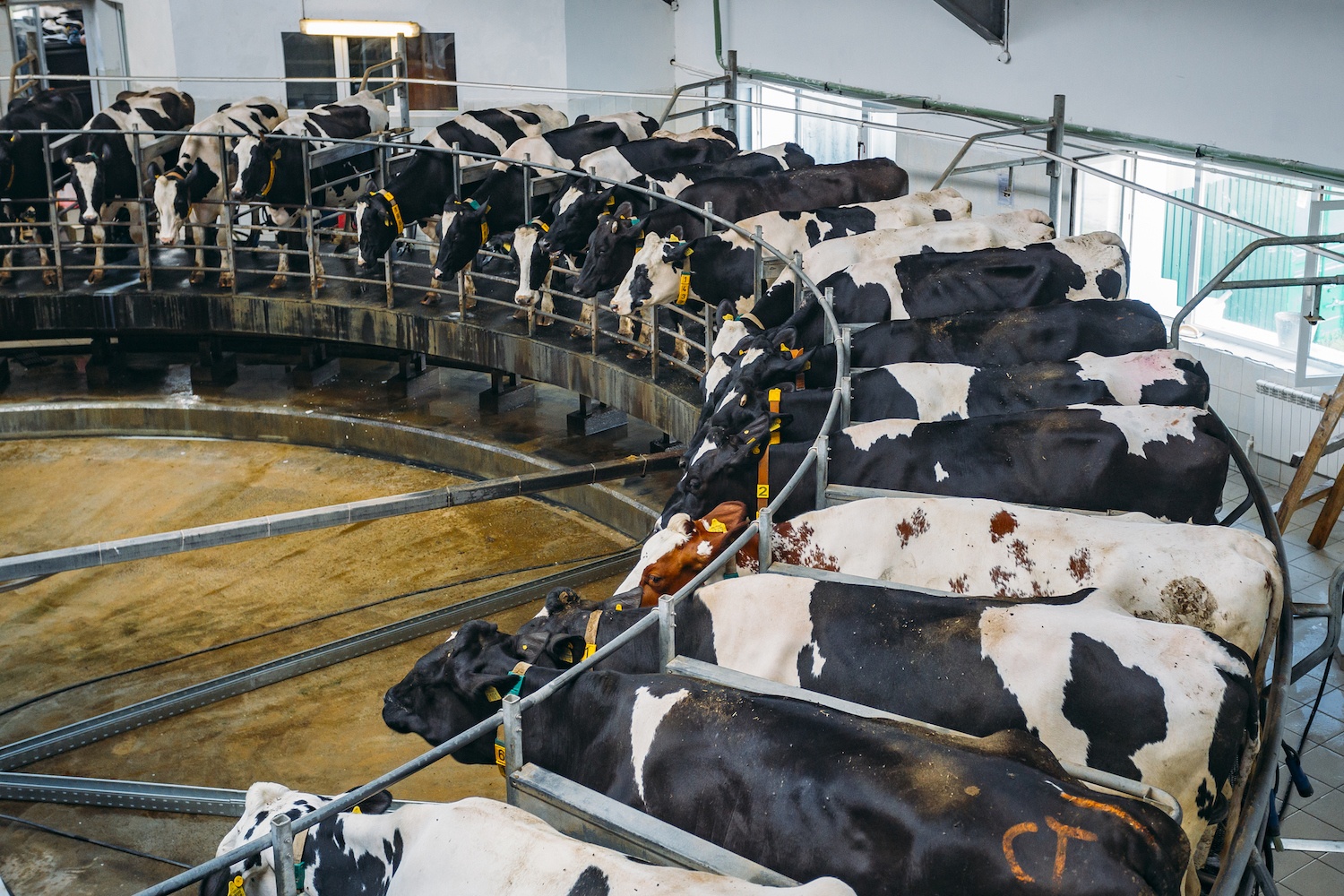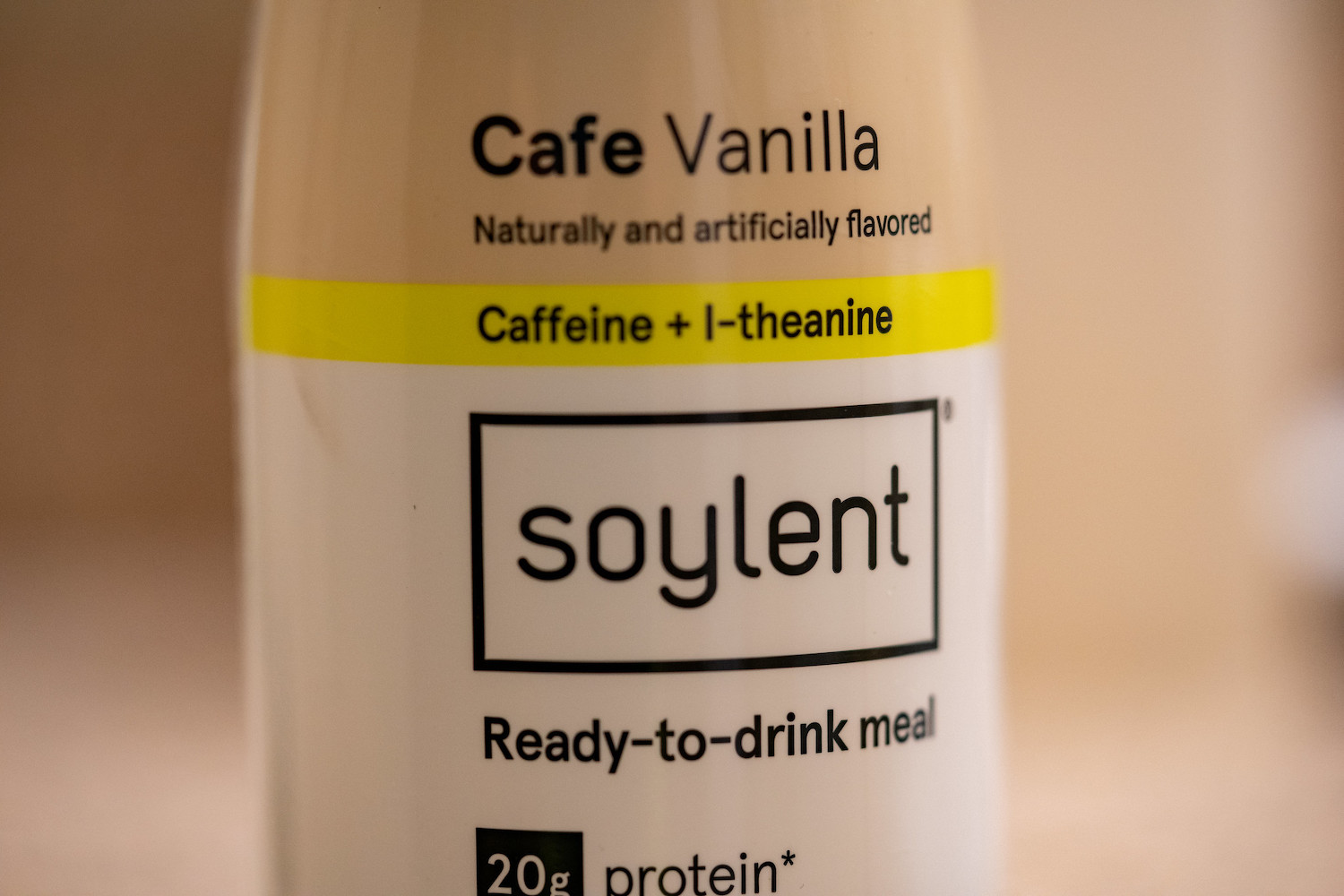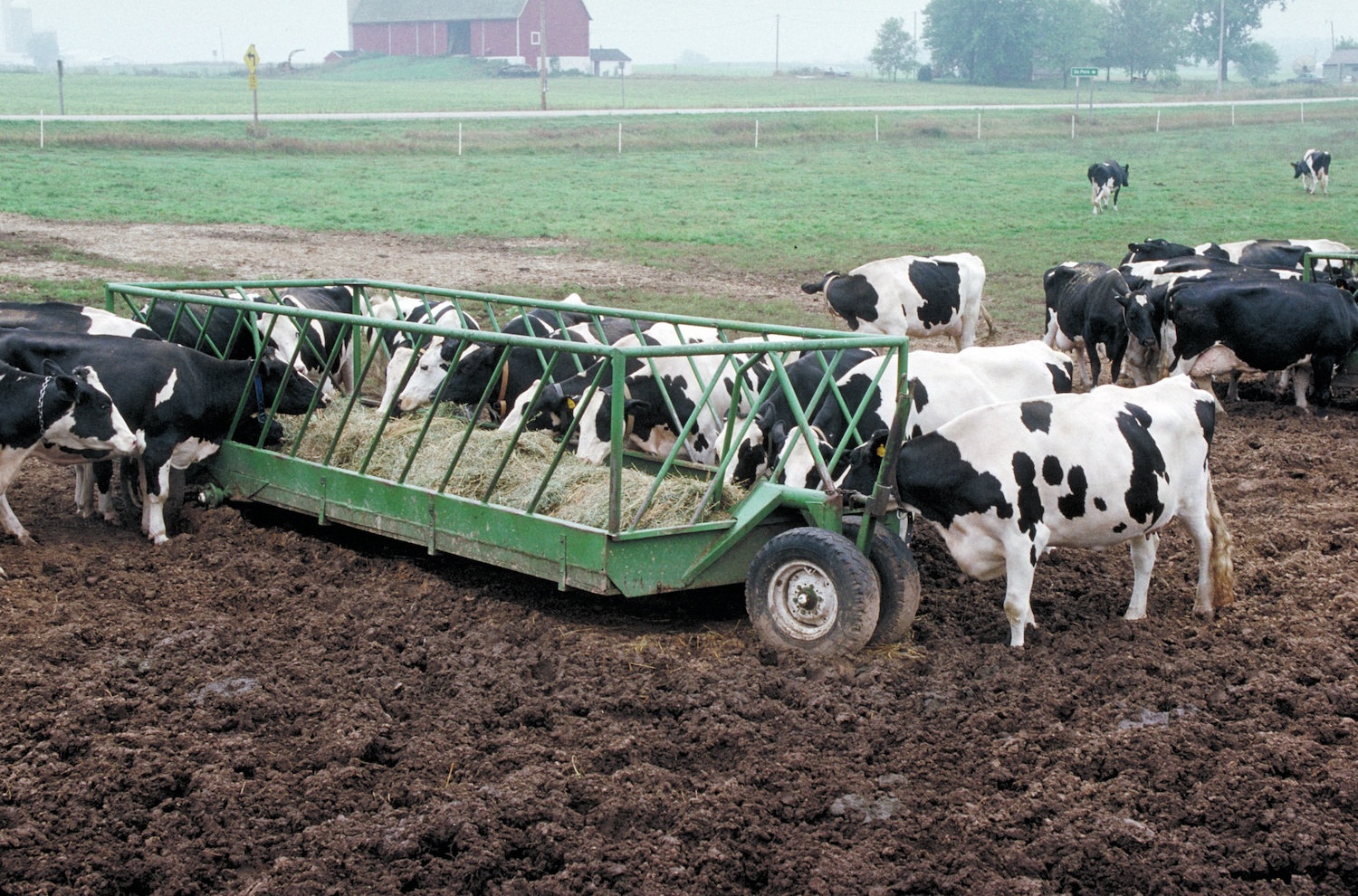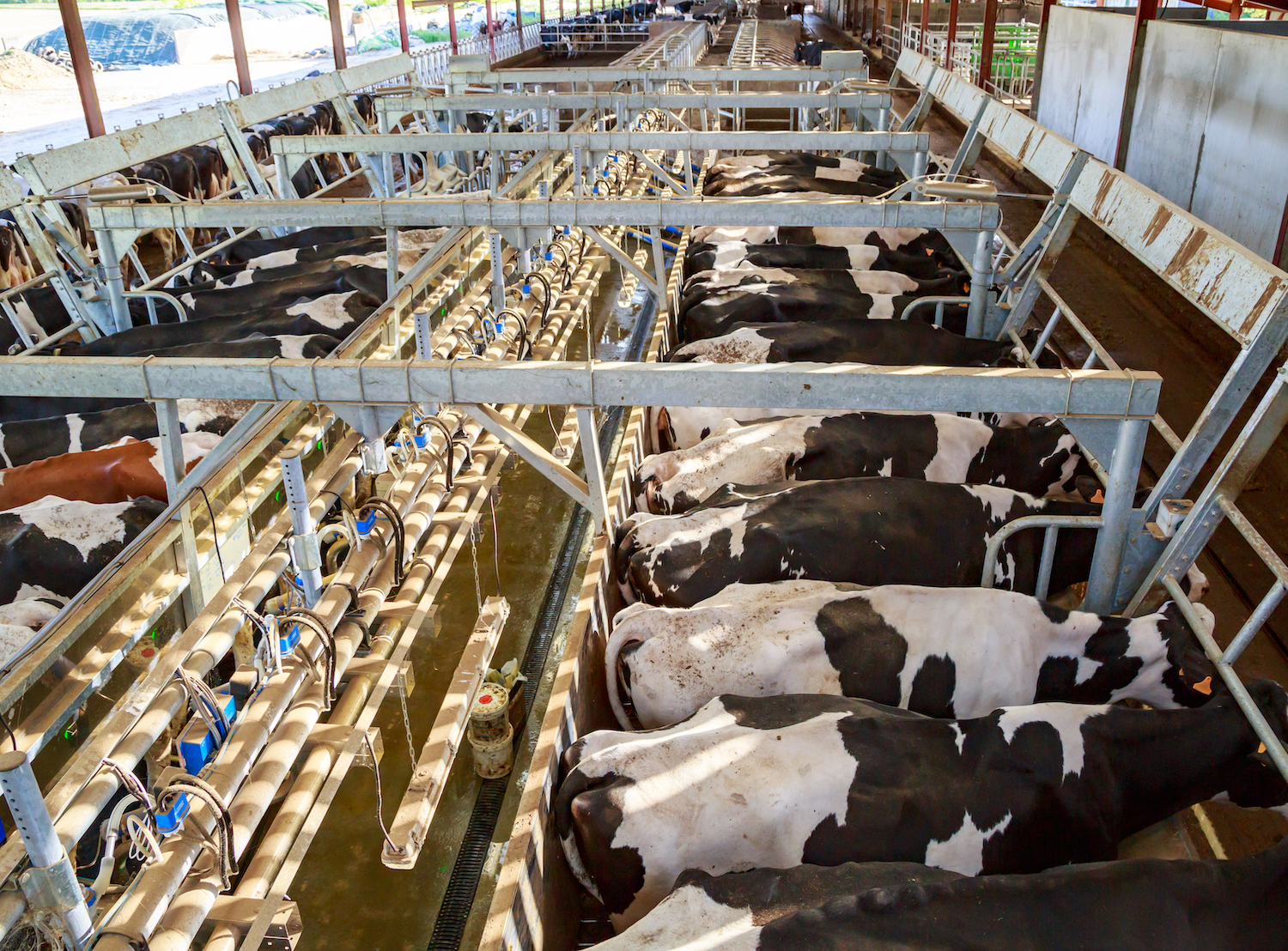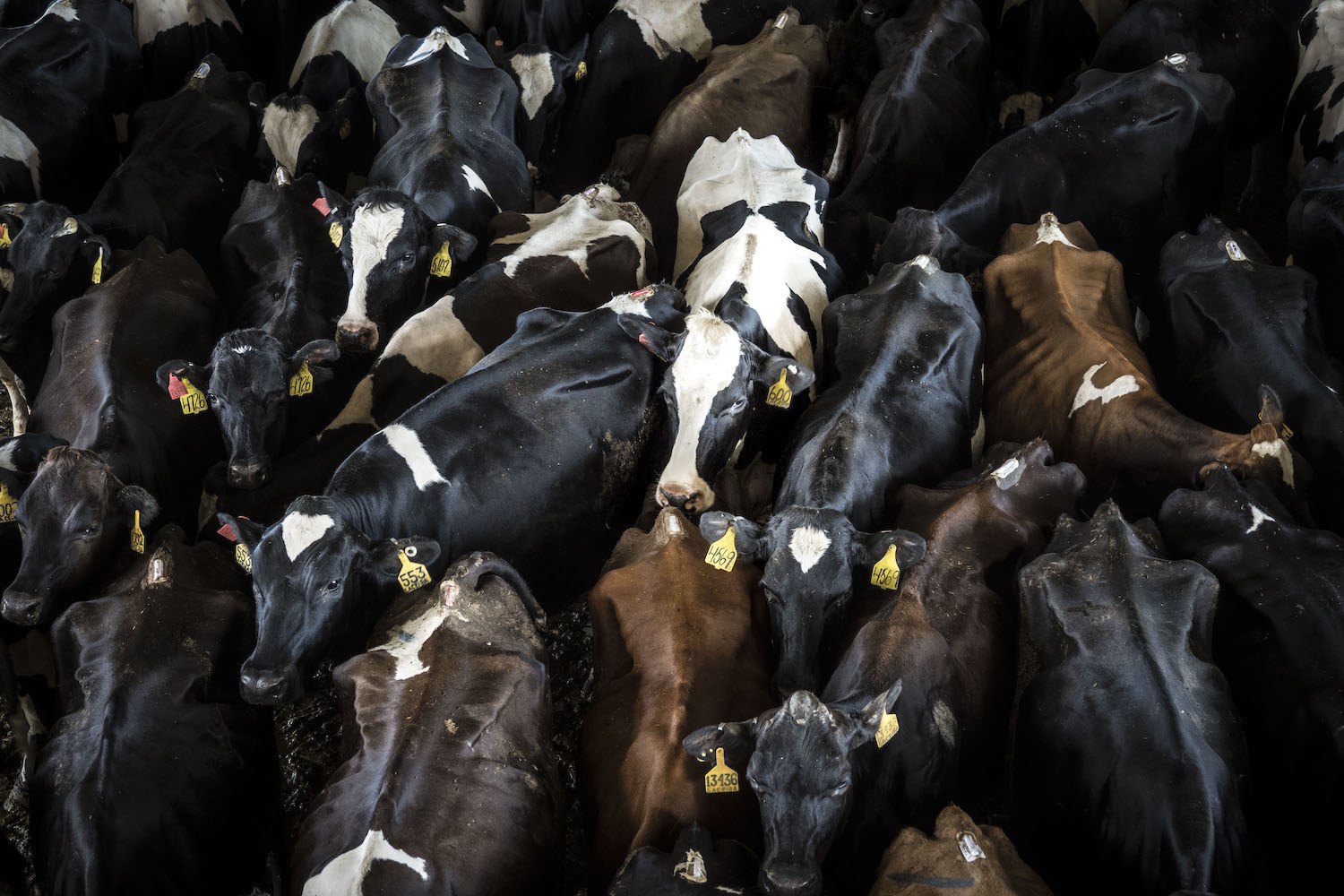
USDA Photo by Preston Keres
The temporary ban would give state regulators time to evaluate environmental and public health risks. It’s the latest in a long line of similar proposals.
In 2017, state regulators in Oregon allowed a huge dairy to open before construction was complete and before it had put its animal waste management in place. The consequences were calamitous: Lost Valley Farm was cited for over 200 environmental violations over the next 18 months, including allowing manure lagoons to overflow and improperly storing dead animals, according to the Statesman Journal. The state tried unsuccessfully to shut the dairy down (though it eventually closed in 2019 as part of a bankruptcy case).
Lost Valley Farm “really highlighted the crisis—and the potential crisis—we have here in Oregon when it comes to these large facilities,” said Emma Newton, Oregon organizer with Food and Water Watch and coalition organizer for Stand Up to Factory Farms. “It exposed the underbelly of this industry to not only state regulators, but also to other Oregonians.”
Now, a coalition of food safety, environmental, and family farm groups are pushing for a total moratorium on mega-dairy construction. This month, State Representative Rob Nosse and Senator Michael Dembrow introduced a simplified version of a moratorium bill that was floated unsuccessfully in 2019. If passed, the legislation would temporarily halt the construction and expansion of dairies with more than 2,500 cows while regulators study and address their environmental and social impacts.
“It’s not like this issue has gone away. In some ways, I think there is increased urgency. And I think that more legislators are paying attention to this issue.”
“It’s not like this issue has gone away. In some ways, I think there is increased urgency. And I think that more legislators are paying attention to this issue,” said Krissy Kasserman, factory farm organizing director with Food and Water Watch, adding that a 30,000-head farm is seeking a permit for the site formerly occupied by Lost Valley Farm.
As a result of the 2017 disaster, Oregon’s state government convened a working group composed of small farm advocates, environmental regulators, and industry groups. They managed to agree on a permitting process that would ensure any new mega-dairies had locked down their water rights and waste-handling plans before beginning construction.
The vote on the permitting bill “seemed like a slam-dunk,” Civil Eats reported in 2019. But it never made it out of committee after a Democratic state legislator from a dairy region voted against it. Another version of the bill supported by dairy interests passed out of committee the following year but has yet to become law. The compromise isn’t a win for Kasserman and Newton, who believe a lengthier permitting process doesn’t go far enough in addressing environmental and public health concerns.
CAFO moratoria were briefly in the spotlight as Democratic presidential hopefuls campaigned in the Iowa caucuses.
Oregon’s proposed mega-dairy moratorium marks the most recent entry in a long line of efforts by state and local advocates to halt or pause the construction of large-scale livestock operations. In 1997, North Carolina implemented a moratorium on new hog farms, a policy that was made permanent in 2007 but only applies to facilities that use anaerobic waste lagoons. Activists in Iowa have been pushing for a ban on the construction of new CAFOs (aka, concentrated animal feeding operations) for years; temporary, local bans on new construction have succeeded in Wisconsin and Nebraska.
Calls for complete moratoria are in many ways a response to the federal government’s failure to regulate large-scale livestock operations. In 2017, the Environmental Protection Agency’s internal watchdog found that despite agreeing to measure the air quality impact of CAFOs as far back as 2005, the agency had still not developed reliable methods to determine whether the facilities complied with the Clean Air Act. Emissions reporting requirements were further relaxed during the Trump administration.
[Subscribe to our 2x-weekly newsletter and never miss a story.]
In 2019, the American Public Health Association joined the chorus calling for a national moratorium on the construction of new CAFOs, an important acknowledgement from the public health community that factory farms pose a risk to human health, not only because of the air pollution that impacts surrounding communities, but also because the intensive use of antibiotics threatens to hasten the spread of antibiotic-resistant bacteria.
“Our organization and several others are very concerned about Biden’s appointment of Tom Vilsack at USDA, which I think points to a sort of status quo approach to factory farms and agriculture in this country.”
CAFO moratoria were briefly in the spotlight as Democratic presidential hopefuls campaigned in the Iowa caucuses, where family farm advocates pressured them to clarify their stances on livestock farming. Senator and then-presidential hopeful Cory Booker introduced a bill to enact a ban on new CAFO construction in December 2019; in a questionnaire that month, Senators Warren and Sanders also committed to supporting such a policy. President Biden did not respond to the questionnaire.
Advocates worry that Biden’s selection of former Secretary of Agriculture Tom Vilsack to lead the Department of Agriculture may signal a reticence to take bold action to regulate factory farms because the agency under Obama ultimately did little to curb emissions or blunt the power of the biggest meatpacking companies. “Our organization and several others are very concerned about Biden’s appointment of Tom Vilsack at USDA, which I think points to a sort of status quo approach to factory farms and agriculture in this country,” Kasserman said. “I think we are keeping a very close eye on those developments.
Still, Vox points out that USDA could do a lot to rein in animal agriculture without any help from Congress, assuming the agency had the will. A good starting point would be to catalogue all the air and water emissions standards that currently exempt factory farms, said co-director of Yale’s Law, Ethics, and Animal Program Jonathan Lovvorn. Pressuring states to enforce key provisions in the Clean Water Act and the Clean Air Act could work, too.
The Biden administration’s selection of other key USDA personnel may provide hints to its stance on factory farm regulations in the coming days and weeks. In the meantime, Oregon advocates hope the state legislature will pass the moratorium—and ultimately extend it indefinitely.

